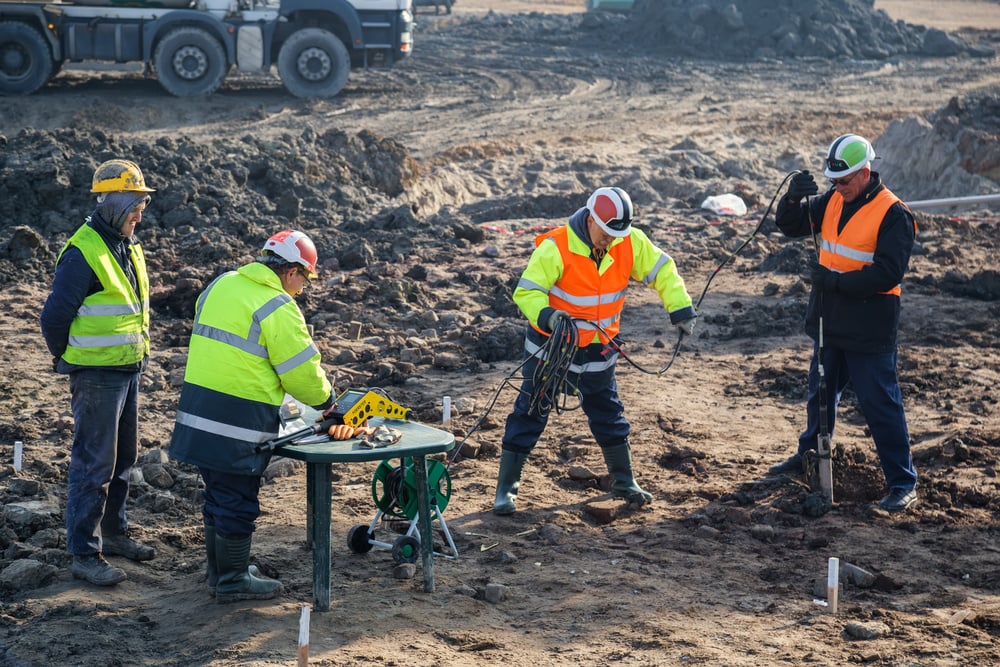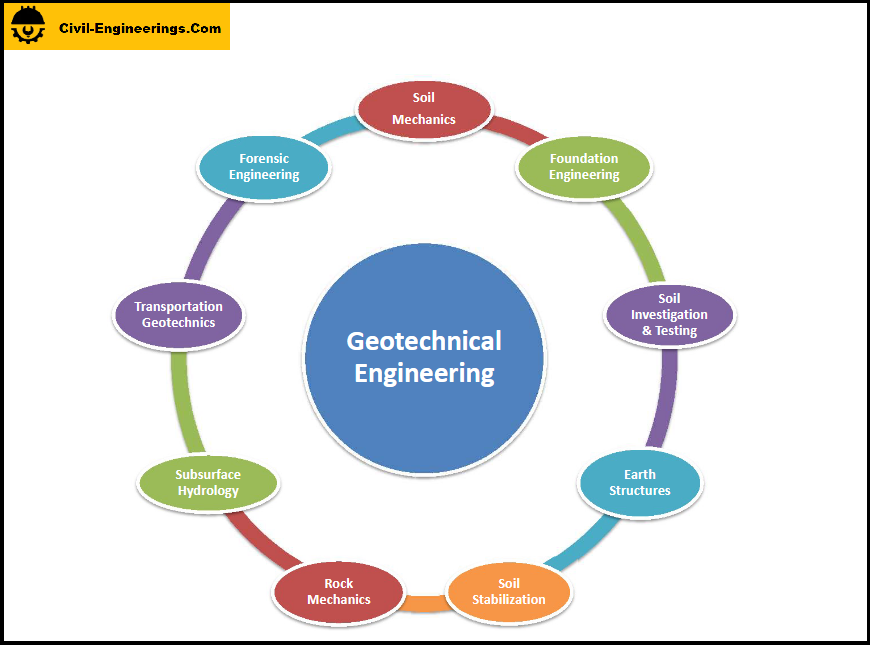Facts About Geotechnical Engineering For Construction Projects Revealed
How Geotechnical Engineering For Construction Projects can Save You Time, Stress, and Money.
Table of ContentsA Biased View of Geotechnical Engineering For Construction ProjectsHow Geotechnical Engineering For Construction Projects can Save You Time, Stress, and Money.Our Geotechnical Engineering For Construction Projects DiariesThe 6-Second Trick For Geotechnical Engineering For Construction ProjectsLittle Known Facts About Geotechnical Engineering For Construction Projects.Geotechnical Engineering For Construction Projects Can Be Fun For AnyoneSome Known Factual Statements About Geotechnical Engineering For Construction Projects
Concepts and Technique of Ground Enhancement. Ground Improvement Concepts And Applications In Asia. Layout evaluation in rock technicians.Cengage Knowing, Stamford, 666 p. Atkinson, J., 2007. The mechanics of soils and foundations. The Observational Method in ground design principles and applications.
Our Geotechnical Engineering For Construction Projects Ideas
Lab and field testing plays an important duty in this procedure. By drawing out examples from the earth's subsurface and applying a suite of examinations, geotechnical engineers can predict the behaviour of dirt layers and review their suitability for numerous building endeavours. The significance of geotechnical design in civil engineering can not be overemphasized, attributable to a number of variables: The first step in any geotechnical study involves establishing the soil type at the building and construction website.
Recognizing these qualities guarantees that just ideal soil types are selected for the advancement, therefore preventing potential architectural failures. The foundation serves as the bedrock of any construction job. Picking the suitable structure kind is a choice that depends upon the extensive analysis given by geotechnical design. This ensures the durability and security of frameworks by suiting the loads they will bear.

Geotechnical website examination is a critical action in the planning and execution of any construction project. It involves the collection and analysis of information related to the physical residential or commercial properties of soil and rock below a suggested building site. This details is essential for the layout and building and construction of secure, steady, and sustainable structures.
Geotechnical Engineering For Construction Projects Can Be Fun For Anyone
, also understood as subsurface expedition, entails a series of tasks intended at identifying the soil, rock, and groundwater problems at a building and construction site. The main purposes are to recognize potential geotechnical risks, analyze the design residential properties of subsurface products, and offer suggestions for the layout and construction of foundations, preserving walls, and other structures.
This might include geological maps, aerial photos, previous examination records, and historic data. The workdesk research study aids in recognizing potential geotechnical concerns and planning the subsequent fieldwork. Following the desk study, a site reconnaissance is conducted to visually examine the site and its environments. This entails observing the topography, water drainage patterns, existing frameworks, vegetation, and any indications of instability or disintegration.
All About Geotechnical Engineering For Construction Projects
Superficial examination pits are excavated to directly observe and example the soil and rock. This approach works for examining the upper layers of the subsurface and determining near-surface threats. Non-invasive geophysical approaches, such as seismic refraction, ground-penetrating radar (GPR), and electrical resistivity tomography (ERT), are made use of to map subsurface conditions and identify anomalies.
Dirt and rock examples accumulated during the area investigation are subjected to laboratory testing to determine their physical and mechanical buildings. Typical lab examinations consist of grain size analysis, Atterberg restrictions, Visit Website compaction examinations, triaxial shear examinations, and debt consolidation tests. These examinations provide essential information for geotechnical analysis and layout. The data collected from the desk study, website reconnaissance, area examination, and lab screening are analyzed and translated to establish a thorough understanding of the subsurface conditions.
The main benefit of geotechnical website examination is guaranteeing the safety and stability of structures. By recognizing the subsurface conditions, designers can make foundations and other structural aspects that can withstand the lots and environmental forces they will undergo. This lessens the danger of negotiation, decrease, and structural failing.
Indicators on Geotechnical Engineering For Construction Projects You Need To Know
This makes sure effective and safe construction methods. Geotechnical site examinations are frequently needed by constructing codes and policies.
This info is invaluable for job supervisors, architects, and professionals in establishing sensible routines, spending plans, and contingency plans. Geotechnical Engineering for Construction Projects. Skyscraper in a Coastal AreaIn a coastal city, a high-rise property structure was intended on a site with believed loosened sand deposits and a high water table. An in-depth geotechnical examination, consisting of borehole drilling, CPT, and geophysical surveys, was carried out
The Definitive Guide for Geotechnical Engineering For Construction Projects
Based on these searchings for, the foundation design was customized to include deep pile foundations prolonging into steady strata, and ground enhancement methods, such as vibro-compaction, were executed to minimize liquefaction dangers. This aggressive approach ensured the security and stability of the building while preventing pricey post-construction removal. Framework Growth on a Sloping TerrainA significant framework project, including the building of a freeway and bridges, was intended on an uneven terrain with steep inclines.

The Leaning Tower Visit This Link of Pisa (Italy), a legendary architectural marvel, is notorious for its unintentional tilt from substantial geotechnical problems. The tower's structure was inadequately developed to take care of the soft, unsteady dirt beneath it, bring about irregular settlement and its distinct lean. Our world is populated with impressive facilities projectsfrom towering high-rise buildings to sprawling bridgesall standing testament to the development of the numerous building and construction devices and approaches readily available.
Geotechnical engineering is a specific area within civil engineering that concentrates on examining the habits of planet products. This branch dives deep right into the groundinvestigating just how the dirt, rock, and groundwater at a construction site can influenceand be influenced bythe framework that we erect on and right into them. Prior to a single brick is laid or a concrete foundation poured, geotechnical designers probe into the earthgathering vital information regarding the site's dirt composition, rock framework, and groundwater degrees.
Fascination About Geotechnical Engineering For Construction Projects

is a device utilized to assess the integrity and load-bearing capability of heaps throughout installation, leveraging the concept of wave breeding. It maximizes construction effectiveness by supplying real-time evaluations, thus guaranteeing risk-free and reliable heap structures. Among the sensible applications of geotechnical design entails deciding and carrying out the appropriate approaches for structure construction.
Pile driving stands for greater than the plain act of placing structural components right into the ground. On the other hand, it is a very carefully managed process of transferring a structure's tons past the less stable soil layers better to the surfacedown to the extra substantial strata that exist below. In the situation of stack driving, consider just how geotechnical engineers skillfully use this technique to equally distribute the framework's weight.